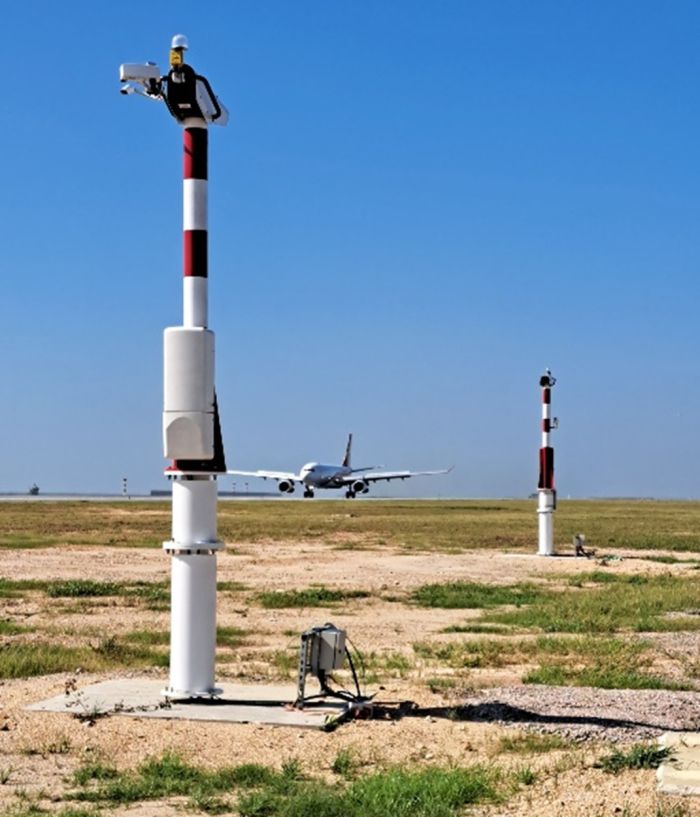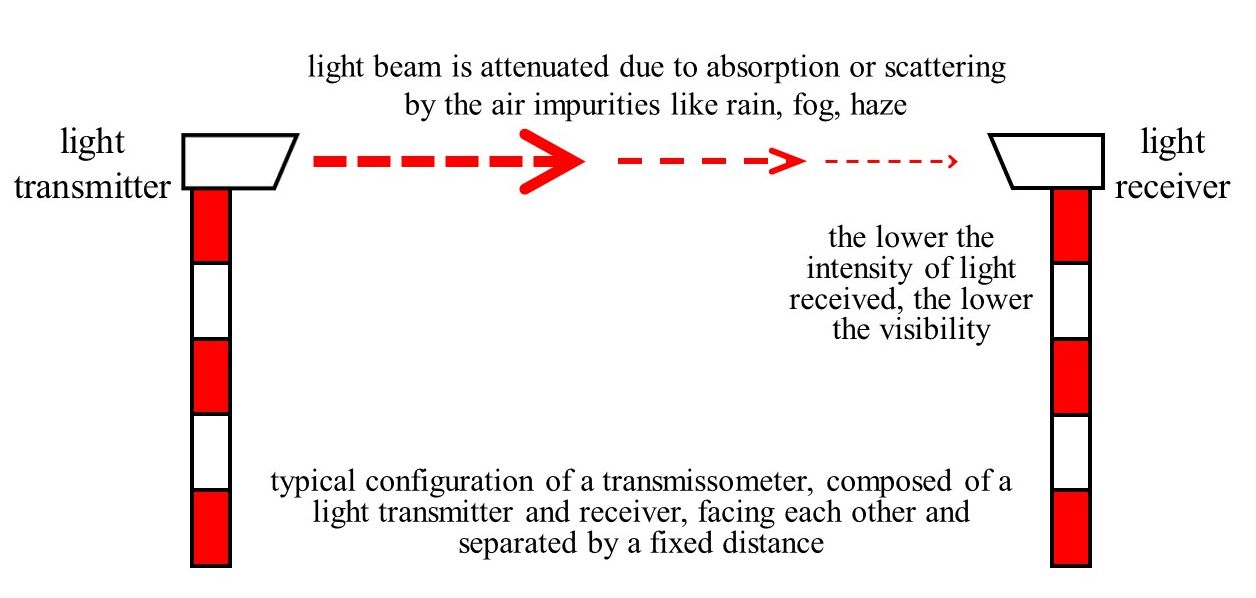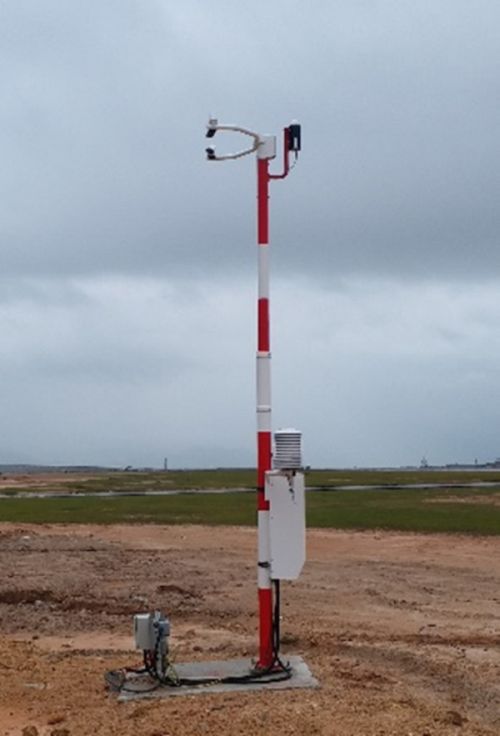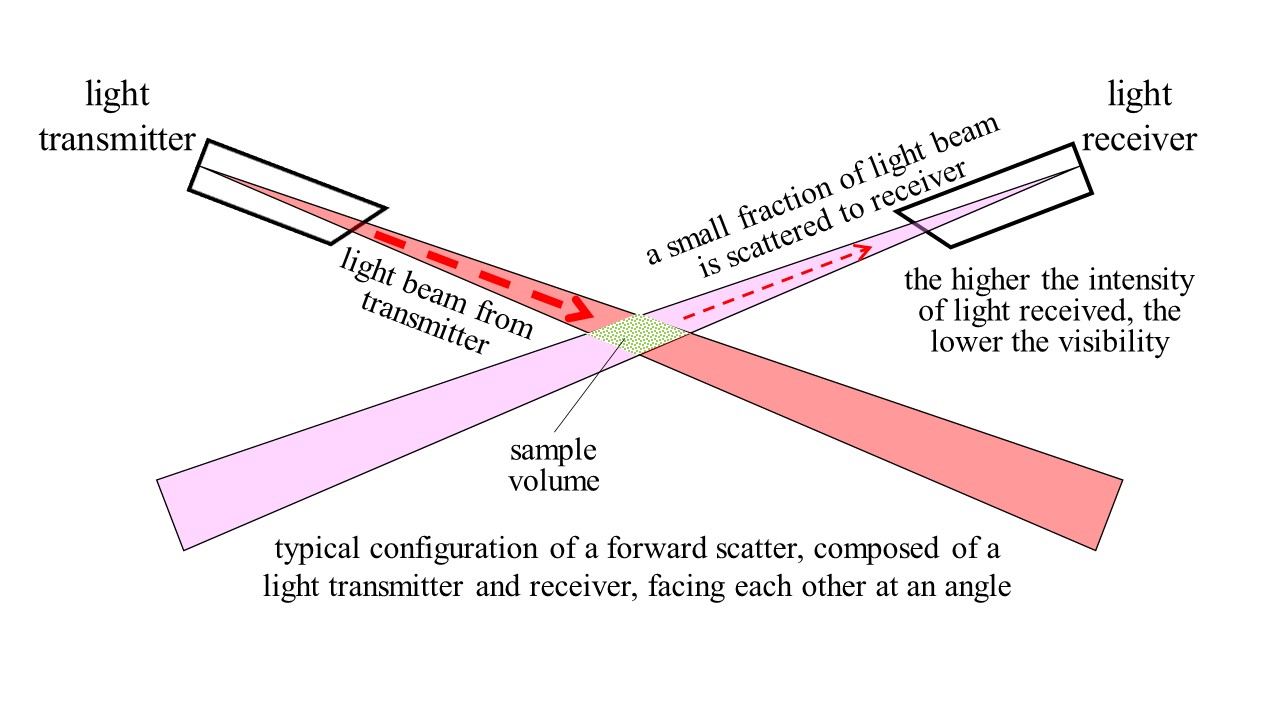Assessing Airport Runway Visual Range to Support Aircraft Landing and Take-off
Assessing Airport Runway Visual Range to Support Aircraft Landing and Take-off
LI Luen-on
March 2024
During period of low visibility, pilots and air traffic controllers must have access to real-time information on runway visibility conditions to determine whether it is suitable for aircraft landing and take-off. Runway visual range (RVR) is one of the most critical information.
International Civil Aviation Organization (ICAO) defines RVR as the range over which the pilot of an aircraft on the centre line of a runway can see the runway surface markings or the lights delineating the runway or identifying its centre line. In practice, RVR cannot be measured directly. It is assessed based on the runway visibility, background luminance and runway light intensity and is intended to represent what a pilot would see on the runway as far as possible.
ICAO recommends that RVR be assessed using either transmissometers (Figure 1(A)) or forward scatter meters (Figure 2(A)) as visibility sensor equipment. The operating principle of these two types of equipment is given in Figure 1(B) and Figure 2(B).
In Hong Kong International Airport, the Hong Kong Observatory employed both transmissometer and forward scatter for assessing RVR. They are located next to each runway that provide a measurement of the visibility at key points along a runway, including touchdown, midpoint, and runway end. The location should be as close to the runway as possible but the adverse impact to flight operation should be avoided. Since the runway lights are near ground level and the average eye level of pilot is about 5 m above the runway, the sensor for measuring visibility is therefore installed at a height of about 2.5m above level of runway centre line as far as practicable so that the assessment for RVR can be a good representative of a pilot’s viewing level. Apart from visibility sensor, the equipment also measures the background luminance and collects the runway light intensity information for assessing RVR. The real-time RVR information is relayed to air traffic controllers who would further relay the RVR to pilots in flight.

Figure 1(A) Transmissometer.

Figure 1(B) Operating principle of transmissometer.

Figure 2(A) Forward scatter meter.

Figure 2(B) Operating principle of forward scatter.
References:
[1] “The Impact of Low Visibility on Aviation” by Ho Ka-leong, June 2012.
[2] World Meteorological Organization “Guide to Meteorological Instruments and Methods of Observation”, WMO-No.8.
[3] ICAO “Manual of Runway Visual Range Observing and Reporting Practices”, Document 9328.
[1] “The Impact of Low Visibility on Aviation” by Ho Ka-leong, June 2012.
[2] World Meteorological Organization “Guide to Meteorological Instruments and Methods of Observation”, WMO-No.8.
[3] ICAO “Manual of Runway Visual Range Observing and Reporting Practices”, Document 9328.